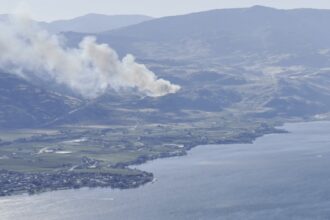An alarming ecological discovery has sent ripples through Atlantic Canada’s scientific community this week as researchers confirmed the first-ever capture of an invasive fish species in Nova Scotia waters. The unprecedented finding marks a concerning milestone as the first documented case of this particular aquatic invader in Atlantic Canadian ecosystems.
Marine biologists from Dalhousie University made the startling discovery during routine sampling near Halifax Harbour, where they captured the non-native species that experts believe may have arrived via ballast water from international shipping vessels. The fish, measuring approximately 27 centimeters, has been positively identified through DNA analysis and physical examination.
“This discovery represents a significant ecological concern,” explained Dr. Meredith Campbell, lead marine ecologist on the research team. “When non-native species establish themselves in new waters, they can outcompete native species for resources, disrupt food chains, and potentially cause lasting damage to local ecosystems that haven’t evolved alongside these organisms.”
Provincial environmental officials have launched an immediate response protocol, working alongside federal authorities from Fisheries and Oceans Canada to assess the potential scope of the invasion. Early surveys suggest this may not be an isolated specimen, raising concerns about an established population.
The economic implications could be substantial for Nova Scotia’s fishing industry, which contributes over $2 billion annually to the provincial economy. Similar invasions in the Great Lakes region have previously cost hundreds of millions in ecological damage and control measures.
“We’re particularly concerned about the timing of this discovery,” noted Fisheries Officer James MacIntyre. “With warming ocean temperatures due to climate change, we’re seeing species expand their ranges northward. This could be the first indication of a broader pattern of invasive species movement into Atlantic Canadian waters.”
The provincial government has allocated emergency funding for expanded monitoring efforts and public education campaigns. Recreational anglers and commercial fishers are being asked to report any unusual catches to a newly established hotline as part of early detection efforts.
Local environmental groups have called for stricter enforcement of ballast water regulations for vessels entering Canadian ports. The International Maritime Organization’s Ballast Water Management Convention establishes standards designed to prevent the spread of invasive aquatic species, but implementation and enforcement remain challenging.
Scientists from across Canada are now collaborating on response strategies, drawing on experiences from other regions that have battled similar invasions. Control methods being considered range from targeted removal efforts to potential biological controls, though experts caution that complete eradication may prove impossible once a species becomes established.
“What we’re witnessing is potentially just the beginning,” warned Dr. Campbell. “The ecological relationships in our coastal waters are delicate and complex. Introducing a new predator or competitor can trigger cascading effects we may not fully understand for years.”
As monitoring efforts intensify along Nova Scotia’s coastline, the pressing question remains: can we develop effective strategies to manage invasive species in our changing oceans before permanent ecological damage occurs?

























